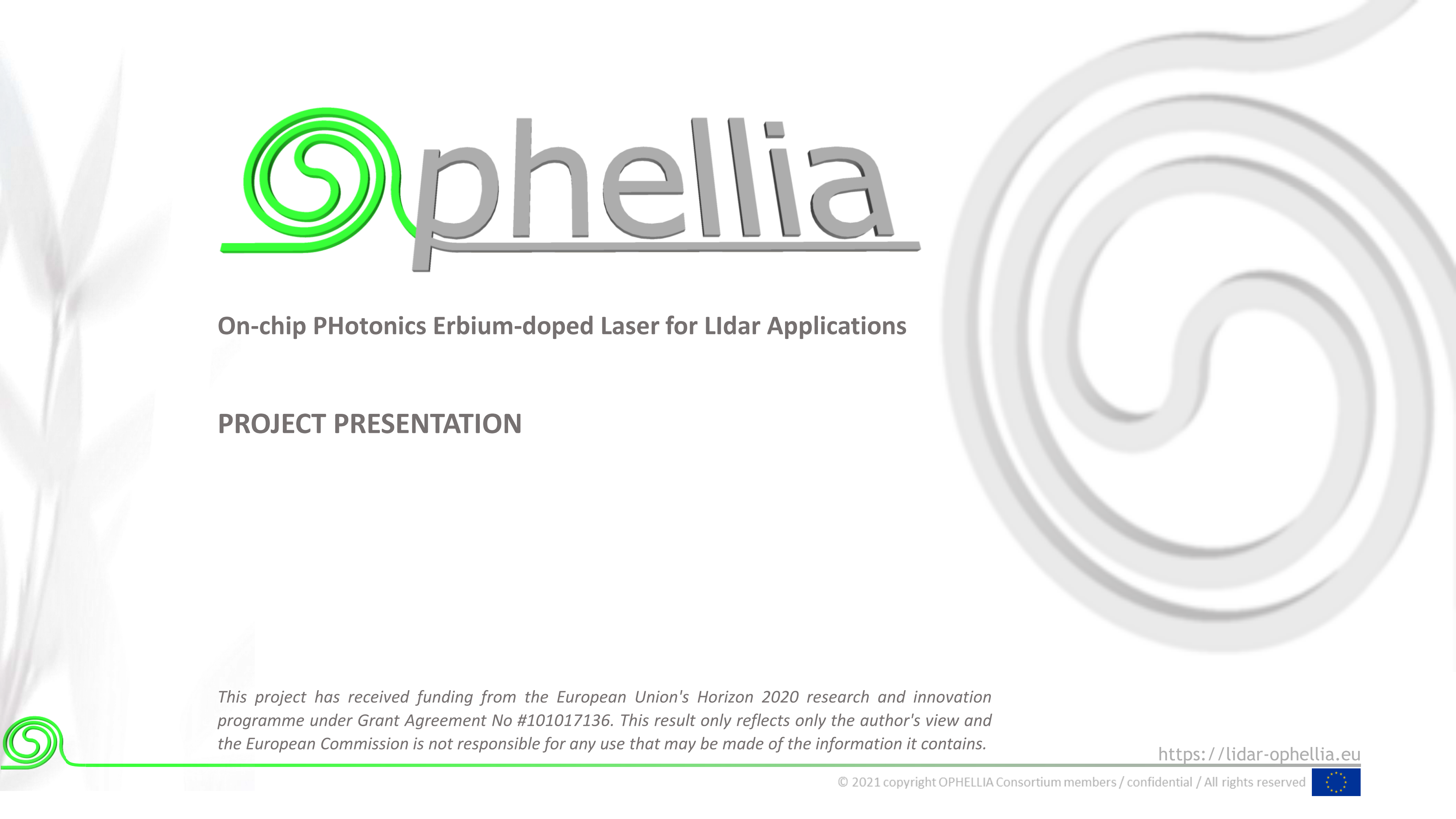About Ophellia
Objective

OPHELLIA: On-chip PHotonics Erbium-doped Laser for LIdar Applications
OPHELLIA is a collaborative research project funded by the European Union’s Horizon 2020 research and innovation programme. The objective of OPHELLIA is to develop novel materials and integration technology for the realization of innovative PIC(a) building blocks to develop PIC-based laser sources for emerging TOF(Time of Fligth) and FMCW(Frequency-modulated continuous-wav) LiDAR applications. These LIDAR will be low cost and low size thanks to the high chip integration and tolerant packaging technology while, at the same time, exhibit the same or even higher performance than existing solutions.
Miniaturized, yet highly sensitive and fast LiDAR systems serve market demands for their use on platforms ranging from robots, drones, and autonomous vehicles (cars, trains, boats, etc.) that are mostly used in complex environments. The widespread use of high performance LiDAR tools faces a need for cost and size reduction. A key component of a LiDAR system is the light source.
Very few laser light sources exist that provide sufficient performance to achieve the required distance range, distance resolution and velocity accuracy of the emerging applications identified in LiDAR roadmaps. The available sources, namely single mode or multimode laser diodes and fiber lasers, are either very costly, not sufficiently robust or not compact enough.
In OPHELLIA, we will investigate advanced materials and integration technologies directed to produce novel PIC building blocks, namely high gain, high output power (booster) amplifiers and on-chip isolators that are not yet available in a PIC format with the required performance. The novel building blocks will be monolithically integrated onto the Si3N4 generic photonic platform to produce high performance laser sources with unprecedented high coherence and high power, which will have a profound impact on the performance of the systems. Advanced packaging will further contribute to a dramatic reduction of the overall cost.
To achieve this ambitious goal, OPHELLIA will leverage the expertise of its consortium members, ranging from materials, integration technologies and PIC design to packaging and LiDAR systems integration, which covers the full chain from innovation to the deployment of the technology in a relevant environment. The successful realization of OPHELLIA will not only represent a milestone towards the widespread utilization of LiDAR systems, but the developed building blocks will also have an enormous impact in other emerging application fields such as datacom/telecom, sensing/spectroscopy and quantum technology.
Field of science
- /engineering and technology/mechanical engineering/vehicle engineering/automotive engineering/autonomous vehicle
- /natural sciences/physical sciences/optics/laser physics
Programme(s)
Topic(s)
Call for proposal
H2020-ICT-2020-2
See other projects for this call
Coordinator
UNIVERSITEIT TWENTE
7522 NB Enschede

